‘As we have seen across other G7 countries, inflation rarely falls in a straight line,’ said Chancellor Jeremy Hunt this morning in response to UK inflation data for September. We’ve seen this in the UK, too: at the start of the year, the rate of inflation rose from 10.1 per cent on the year in January to 10.4 per cent in February – before finally falling out of the double digits in April. And this morning we’ve seen another break in the line: the rate of inflation stuck at 6.7 per cent on the year in September, the same rate as August.
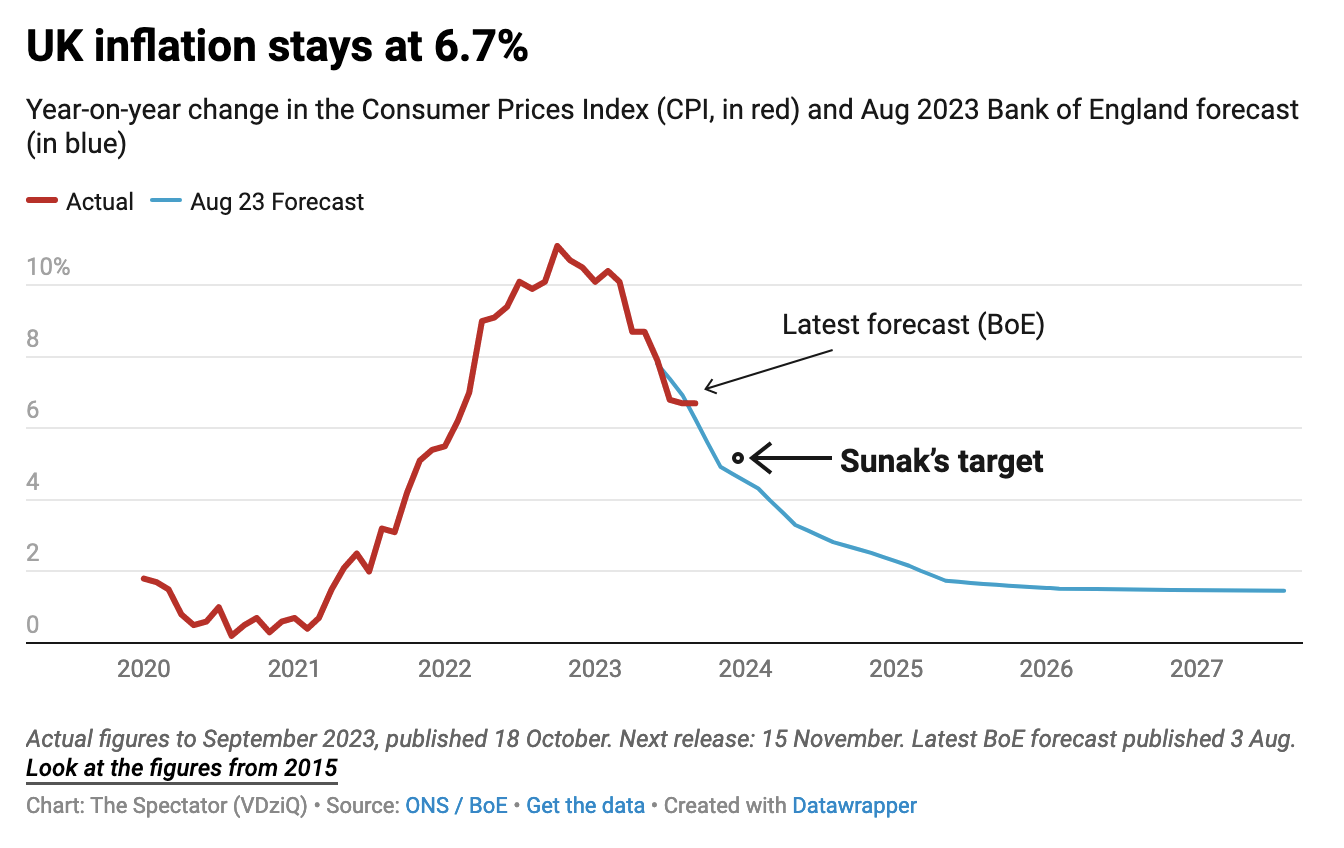
Food and non-alcoholic beverages were the ‘largest downward contributors’ to this month’s figures. Having reached a high of over 19 per cent this spring, food price increases have slowed dramatically, falling to 12.2 per cent on the year in September, down again from 13.6 per cent on the year in August. Meanwhile, core inflation (which excludes food and energy prices) also slowed: to 6.1 per cent on the year in September, down from 6.2 per cent on the year in August. The small uptick in the annual rate of core services, from 6.8 per cent on the year to 6.9 per cent, was balanced out by the fall in core goods, from 6.3 per cent to 6.2 per cent. While the rate of core inflation has been falling, it remains an indicator that the inflation crisis is much bigger than recent shortages in food and energy supplies: price hikes have worked their way into the system and are expected to keep the inflation rate above target until the start of 2025.
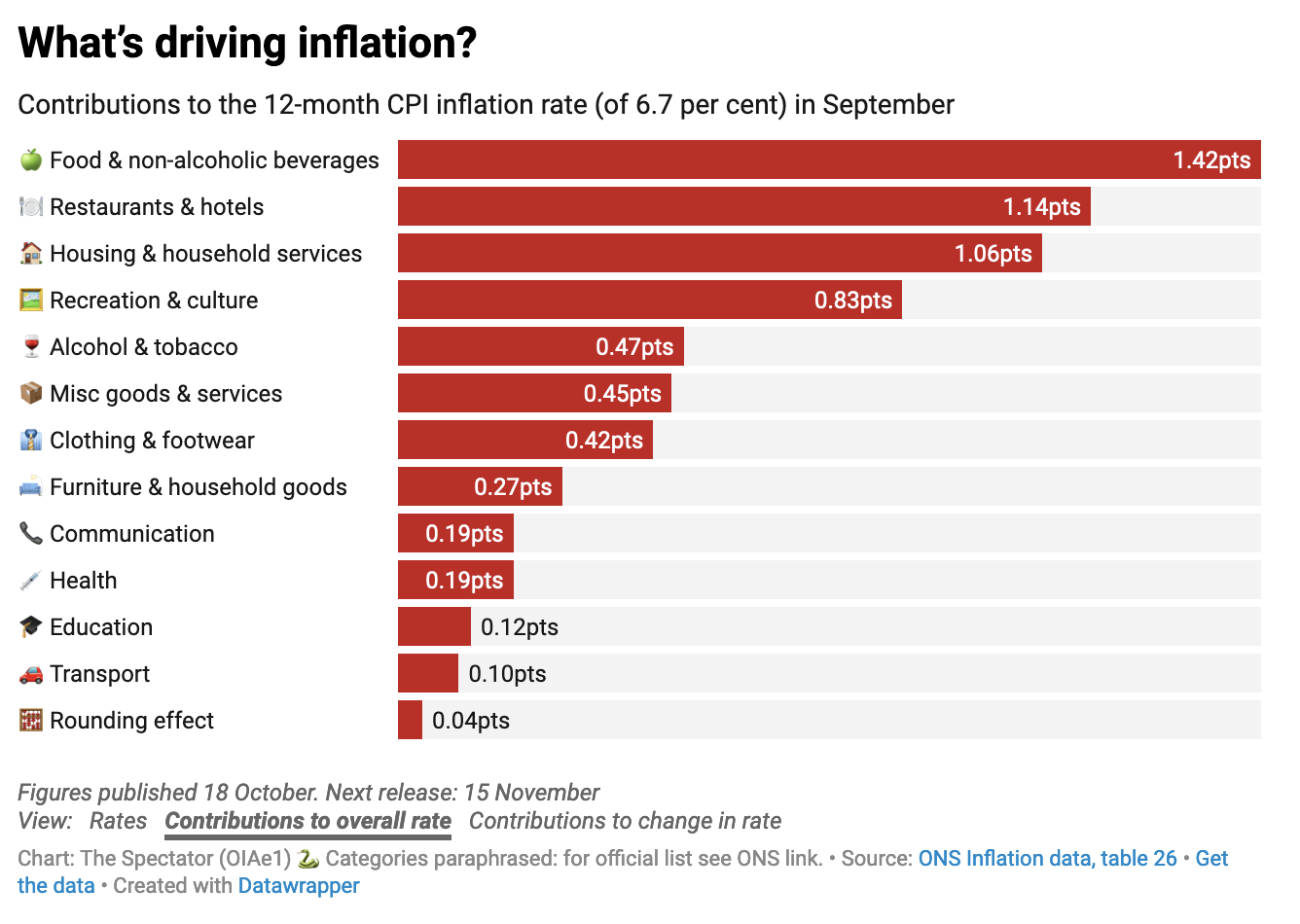
Already questions are being asked about what this means for interest rates. The Bank of England will take notice of that small rise in core services, which it considers to be an indication of inflation. But without any major surge in prices, the Bank will focus heavily on labour market data – and what’s happening to wages – when making its assessments for the Bank rate. September’s data will be disappointing for anyone predicting another fall in the headline rate, but forecasts were not too far off: the consensus was for inflation to rise by 6.6 per cent on the year in September, compared to the 6.7 per cent reported. Moreover, the rate still sits below the Bank of England’s latest prediction of 6.9 per cent in September. This would suggest the timeline to halve inflation by the end of the year is still on track with Threadneedle Street’s forecasts.
October is a much bigger month for inflation news. The first of the month marks the latest change in Ofgem’s price cap, which will see the average family’s energy bill fall under £2,000 – to £1,923. This is expected to have a big impact on the inflation rate, which should slow significantly. Capital Economics this morning is reporting that, if all goes to plan, ‘CPI inflation will be pretty close to 5.0 per cent in October and on track to fall below the 5.1 per cent rate that would mean the Chancellor can successfully say inflation has halved this year.’
Still, it was just last week that the Bank’s governor Andrew Bailey was speaking at the IMF and World Bank’s annual meeting, insisting that votes on the Monetary Policy Committee would continue to be ‘tight ones’, which suggests their next meeting on 2 November could result in holding rates once again, or lead to another 0.25 per cent hike. Market expectation is now that the Bank rate will peak below 6 per cent, but one more hike is still being factored in. Much will depend on the rate of inflation in coming months, wage rises and the impact of rising conflict in the Middle East on oil prices.
Got something to add? Join the discussion and comment below.
Get 10 issues for just $10
Subscribe to The Spectator Australia today for the next 10 magazine issues, plus full online access, for just $10.


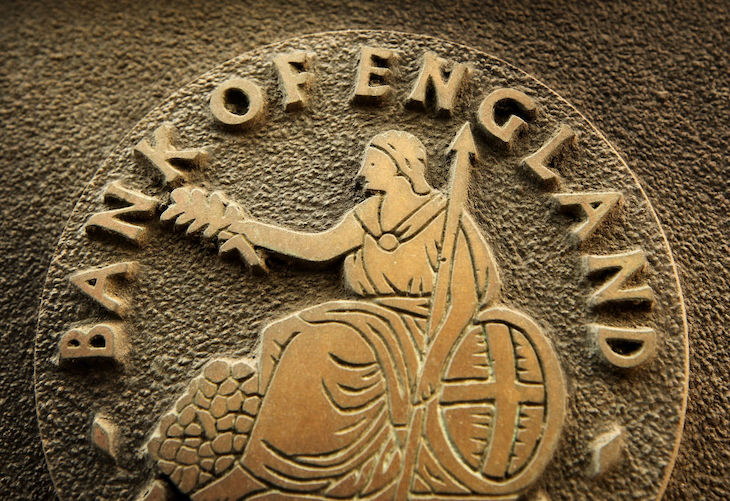
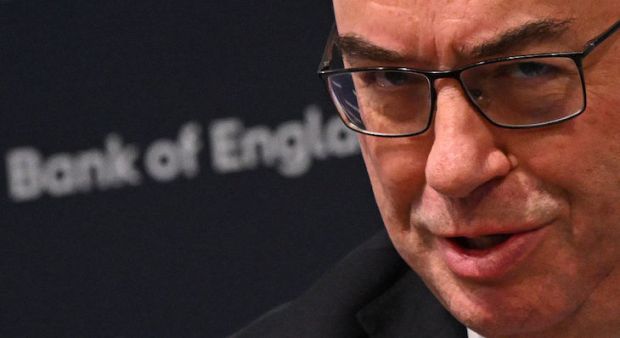
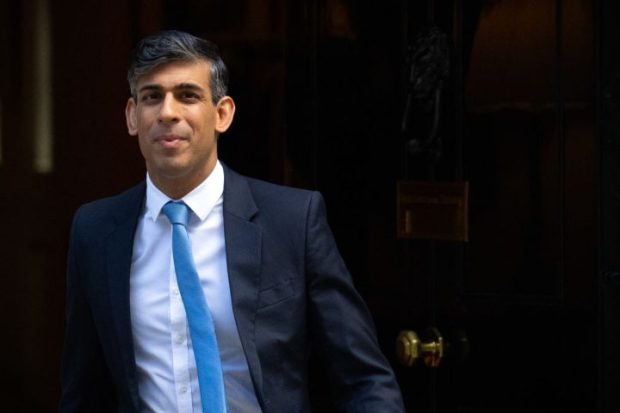
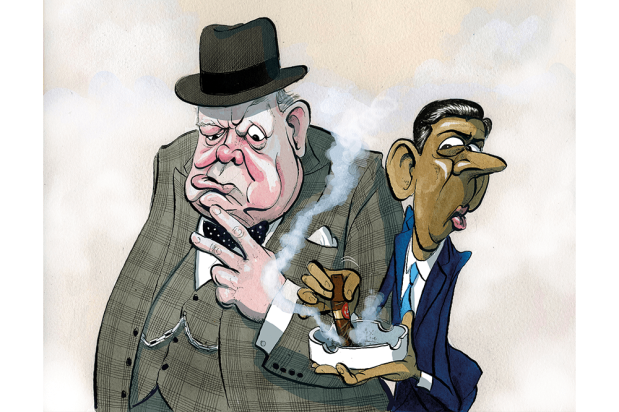
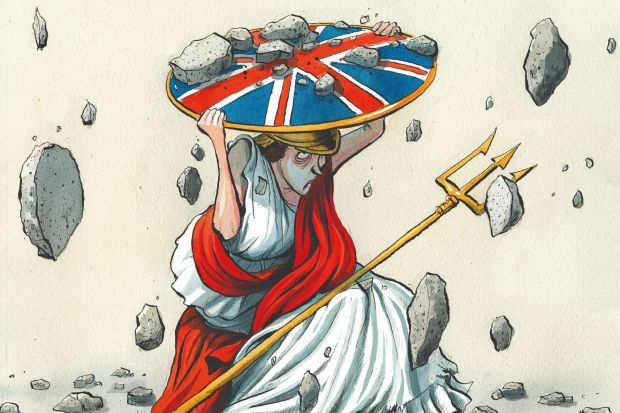
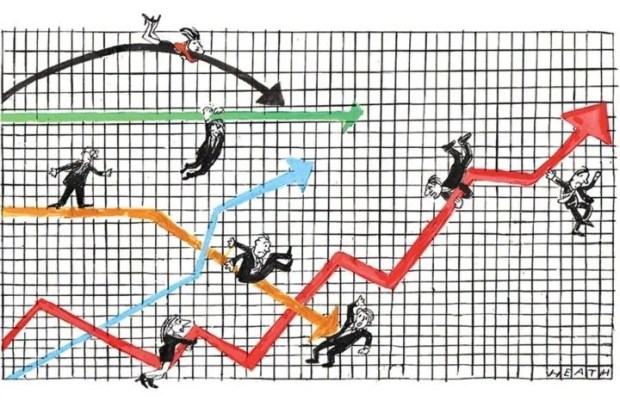
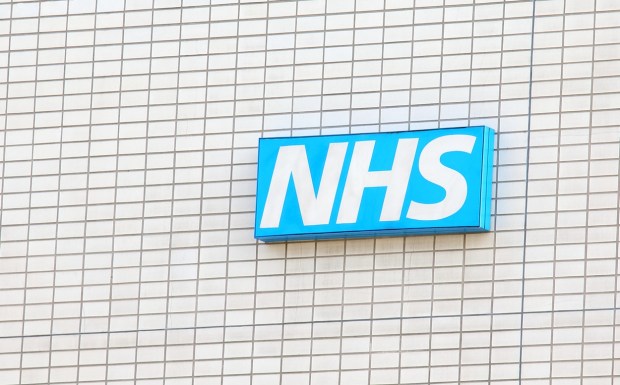












Comments
Don't miss out
Join the conversation with other Spectator Australia readers. Subscribe to leave a comment.
SUBSCRIBEAlready a subscriber? Log in